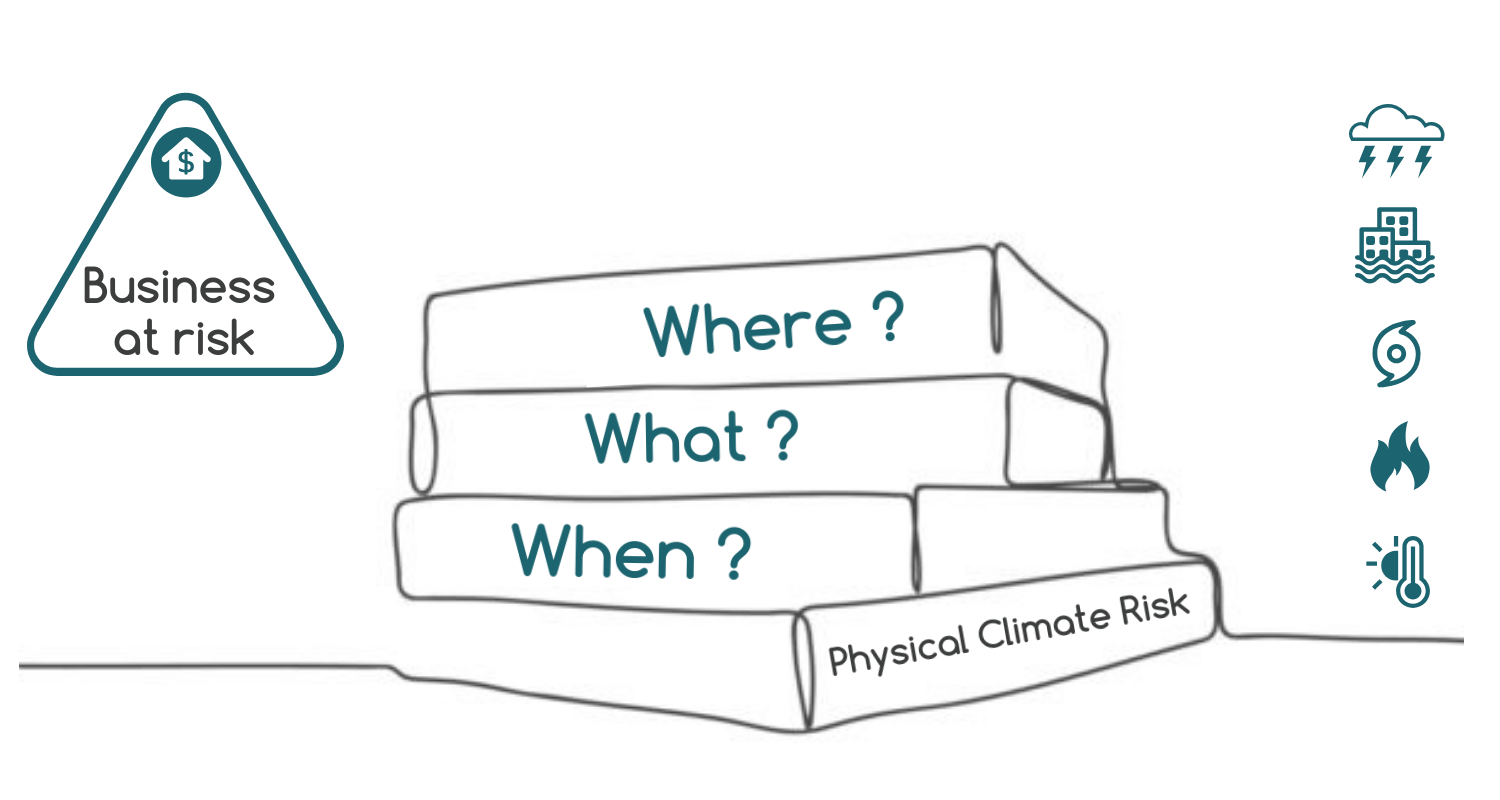
Climate risk knowledge for strategic planning
December 15, 2023
Climate risk assessment in the context of real estate, infrastructure, insurance, and credit risk evaluation looks at the probabilities of severe and rare weather events (flood, drought, hurricane) occurring over a long-term period of 1-5-10-20-50 years.
The methodology for physical climate risk assessment is based on statistical analysis of hundreds of years of hourly-&-daily data generated by dynamic climate and weather models, and also includes all available historical observations and future climate model projections. The goal is to understand the likelihood of acute and chronic hazards over a given time horizon of 1, 5, 10, 20, or 30 years.
Physical climate risk assessment does not pinpoint specific years in the future with specific extreme events!
Climate model projections indicate that a facility/asset/location has a 30% chance of experiencing a major flood in the next 30 years. This flood can occur at any time - today, tomorrow - it is an unavoidable event.
1% chance means a 100-year return period or 0.01% probability.
1% chance of a 1-meter flood: it is an extreme risk
1% chance of a 0.1-meter flood: is severe risk
1% chance of a 0.01-meter flood: it is low risk
When a flood happens, it is critical to have all necessary measures in place to minimize material losses and physical damage.
Flood, wildfire, heatwave, and drought risk assessment is about trends, severity, and probability over time. This risk knowledge helps policymakers, insurers, investors, and city planners understand which risks exist and how they evolve.
With this knowledge, strategic planning begins:
Step 1: Prioritize the assets and areas where urgent investment is needed.
Step 2: Design the investment timeline.
Step 3: Activate private-public financial instruments for priority projects.
While it’s impossible to predict exactly when a catastrophic flood will occur in the coming years, it is possible to flag “at-risk areas” where flood risk is high and where urgent mitigation action is required to ensure we are well-prepared.
Addressing physical climate risks is the new measure for strategic investment allocation.